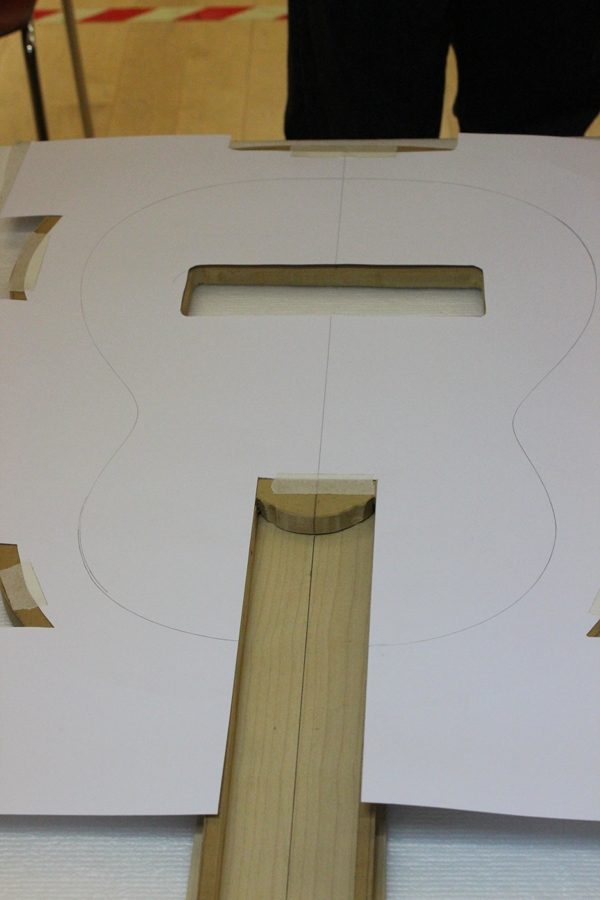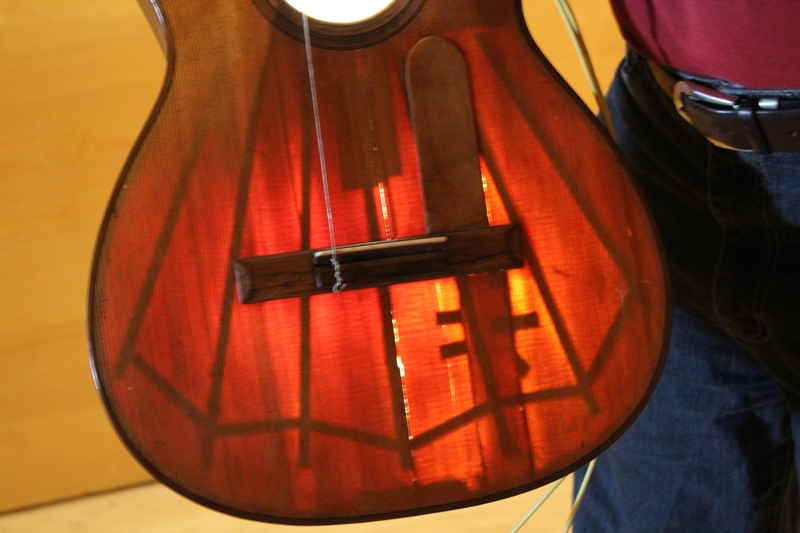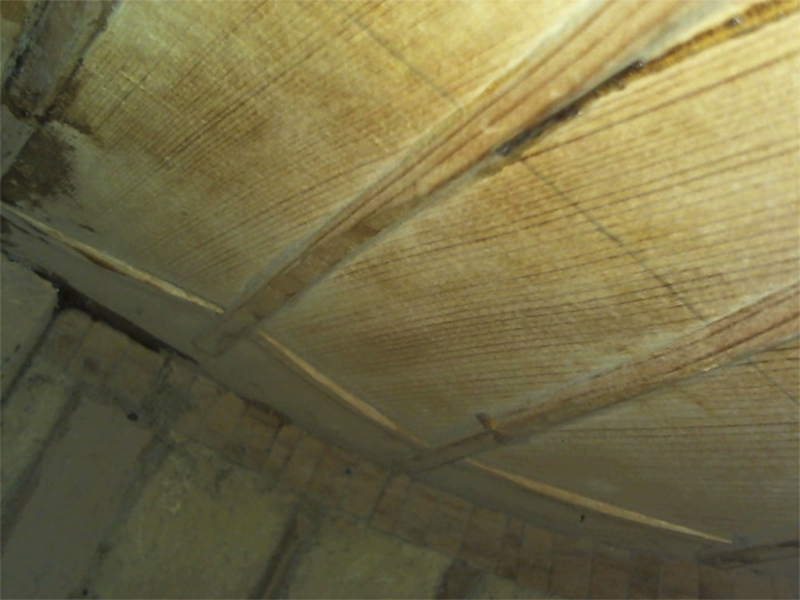A few months ago I was invited to visit the Museum of Music in Barcelona to examine some very interesting guitars. This came about through my luthier friend Antonio Manjon (Barcelona) who is part of a research project being carried out by Marco Antonio Pérez from the Universitat Politècnica de Catalunya – BarcelonaTech. Among other things they are recording the resonances of guitars in different stages of construction as well as those of various historical instruments. The first guitar we examined was the famous paper mache guitar made by Torres in 1862. Although I can’t see either one of us making a copy of this guitar we took enough photos and notes to allow that if the day were ever to come that we wanted to. Here is the bed that we used to trace the outlines of the guitars.  This particular guitar had some nice surprises in store for us, one being the union of the top and sides realized with individual blocks. Quite a few of Torres’ guitars are known to have continous lining and so this was interesting to see. Perhaps the lack of rigid sides meant that linings were impossible to fix to the sides or perhaps Torres was not particularly attached to linings and used “peones” on more of his instruments. Another interesting feature is the structure which takes the place of the typical closing bars. This can be seen in the photo below thanks to the translucent nature of spruce.
This particular guitar had some nice surprises in store for us, one being the union of the top and sides realized with individual blocks. Quite a few of Torres’ guitars are known to have continous lining and so this was interesting to see. Perhaps the lack of rigid sides meant that linings were impossible to fix to the sides or perhaps Torres was not particularly attached to linings and used “peones” on more of his instruments. Another interesting feature is the structure which takes the place of the typical closing bars. This can be seen in the photo below thanks to the translucent nature of spruce.  The last photo here is of the inside of the same guitar and shows both the glue blocks and the finger braces between the fans. The video shows Marco who helped us out by acting as official photographer.
The last photo here is of the inside of the same guitar and shows both the glue blocks and the finger braces between the fans. The video shows Marco who helped us out by acting as official photographer.
